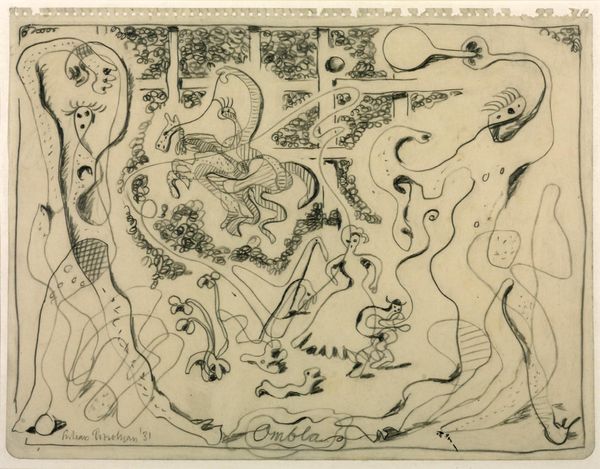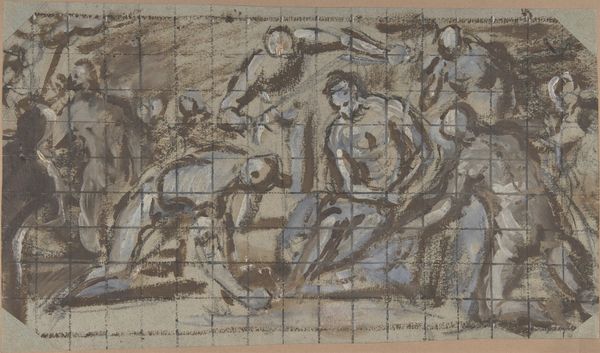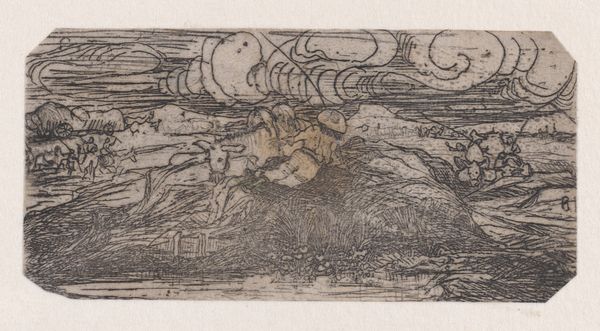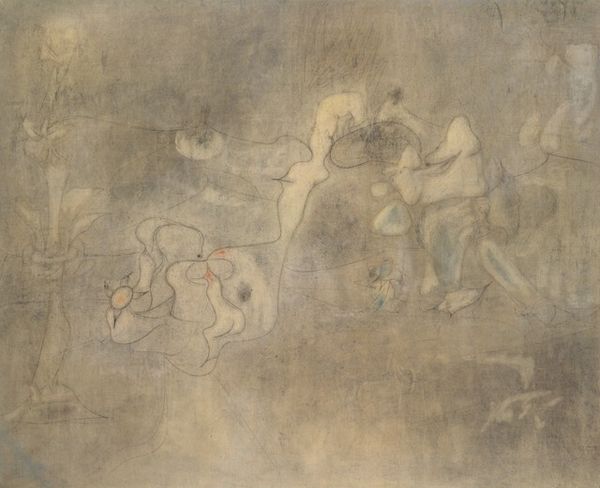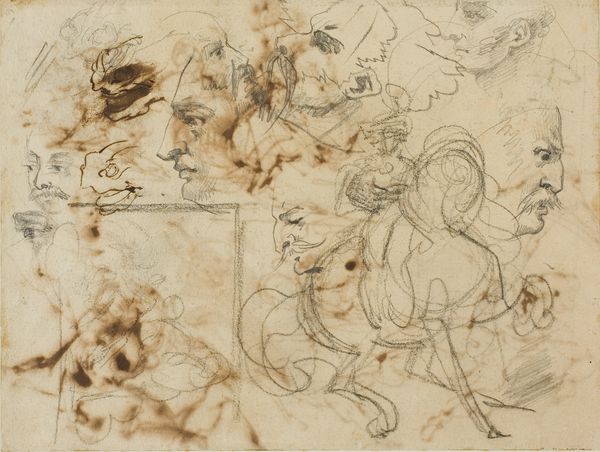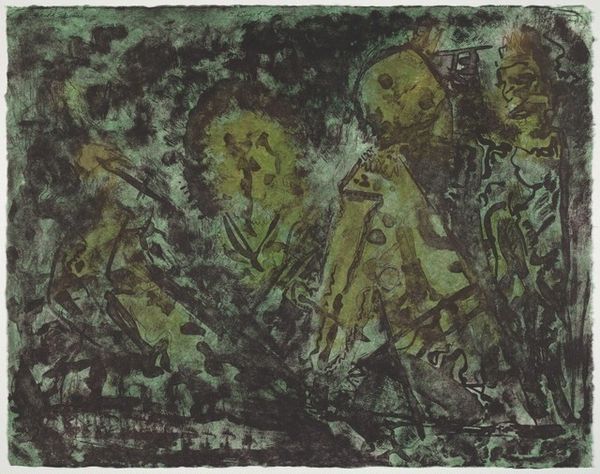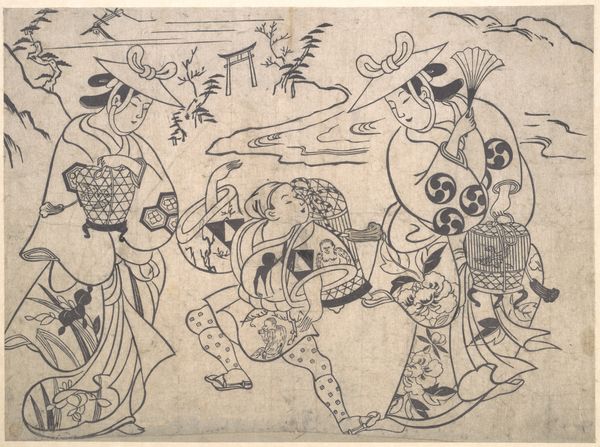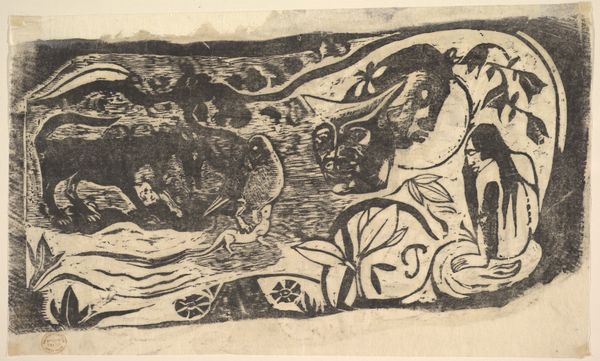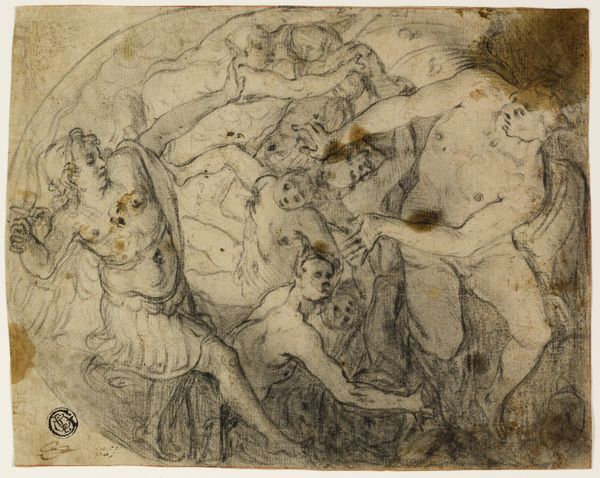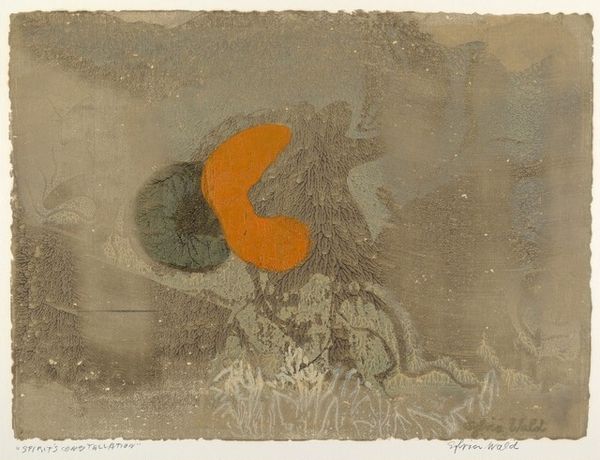
drawing, paper, ink, pastel
#
drawing
#
abstract painting
#
figuration
#
paper
#
ink
#
abstraction
#
symbolism
#
watercolour illustration
#
pastel
Copyright: Public Domain: Artvee
Editor: This drawing is titled "Frieze with Little Monsters," and is attributed to James Ensor, and made with ink, pastel and watercolour on paper. It has this hazy, almost dreamlike quality, but the shapes also feel kind of unsettling. What do you see in this piece? Curator: I see a direct challenge to the established, often sanitised, narratives of power. Ensor, working in a time of intense social and political upheaval, used symbolism to expose the grotesque underbelly of societal norms. Given that his other artworks have satirised the bourgeoisie and critiqued the political establishment, how might this “frieze” function similarly? Editor: I guess it's a bit like he's turning those stuffy classical friezes on their head, populating it not with heroes but… these monsters. But what exactly are they meant to represent? Curator: Consider the socio-political context. The late 19th century was marked by anxieties about social Darwinism, the "degeneration" of the human race, class tensions. Ensor may be giving form to the disenfranchised, the “monsters” created by the social machine itself. Do you find any particular shapes or forms reminiscent of the people or behaviours of his time? Editor: Looking closely, the frenetic energy, it's like a chaotic dance… Is it too much of a stretch to say these monsters represent marginalized people, or maybe even repressed desires? Curator: Not at all. Think about how marginalized voices were often demonized, “othered.” Ensor might be reclaiming the monstrous, imbuing it with agency. And desires? Absolutely. Symbolism provides a screen for veiled content, potentially the grotesque embodiments of our denied impulses, and of fears. What are your thoughts? Editor: That makes a lot of sense! So this isn’t just a random collection of strange shapes but maybe a potent social commentary on the repressed and marginalized. I will keep that in mind in the future. Curator: Precisely. Art becomes a lens through which we can critique the systems that define what is considered ‘normal,’ what is not, and who gets to decide. Thank you!
Comments
No comments
Be the first to comment and join the conversation on the ultimate creative platform.
